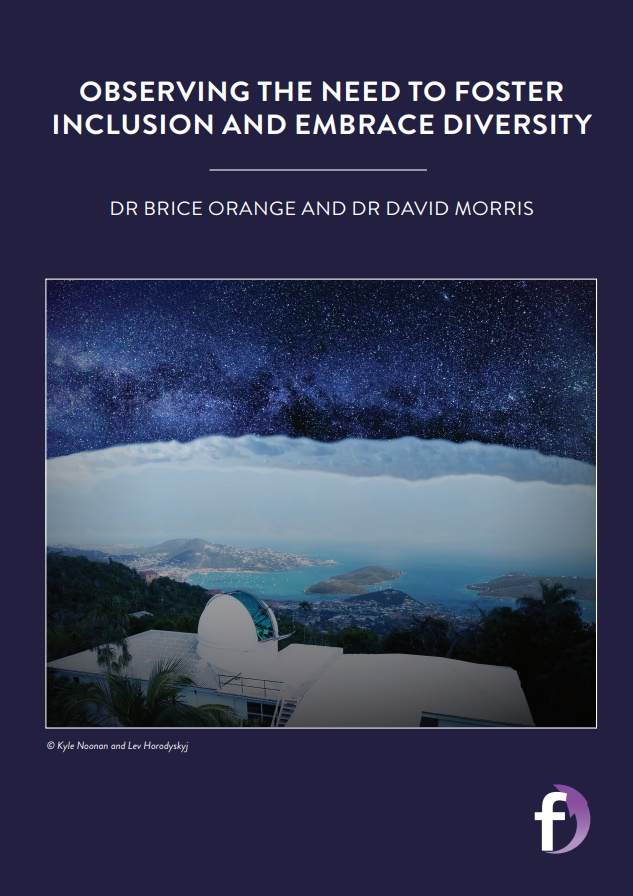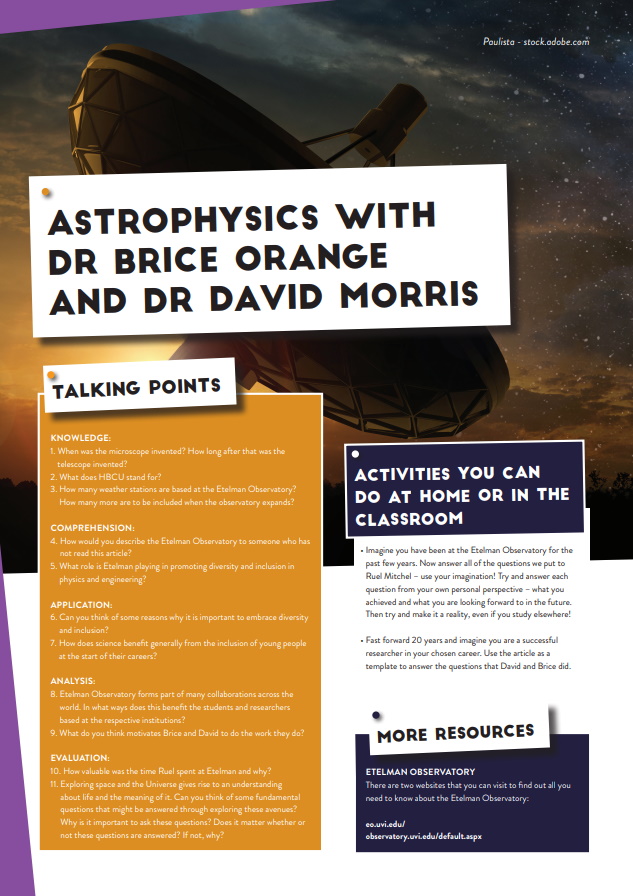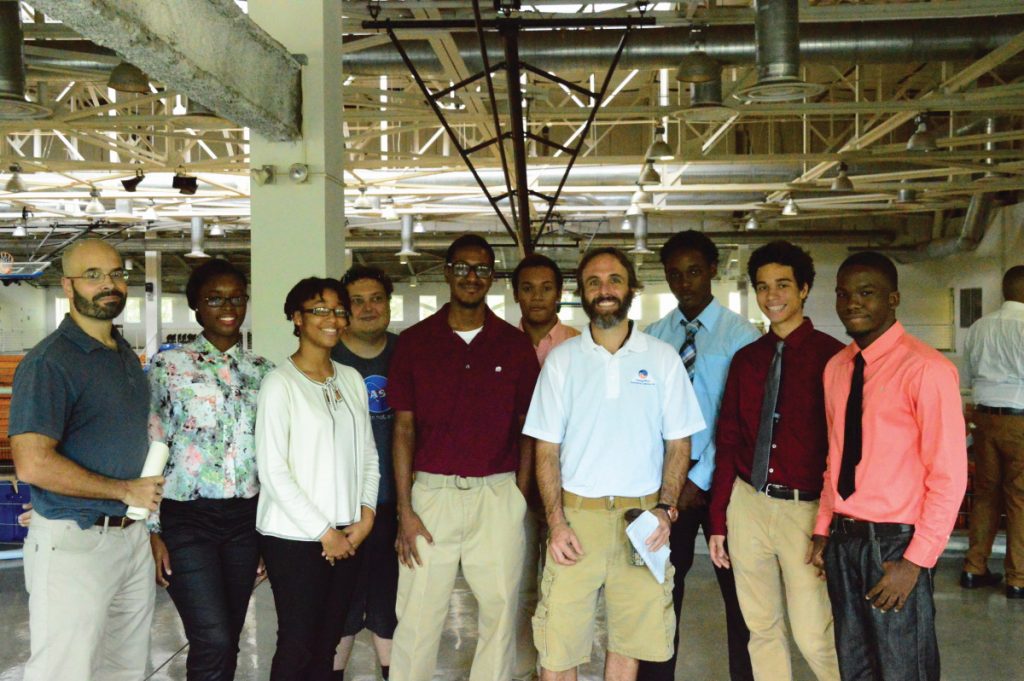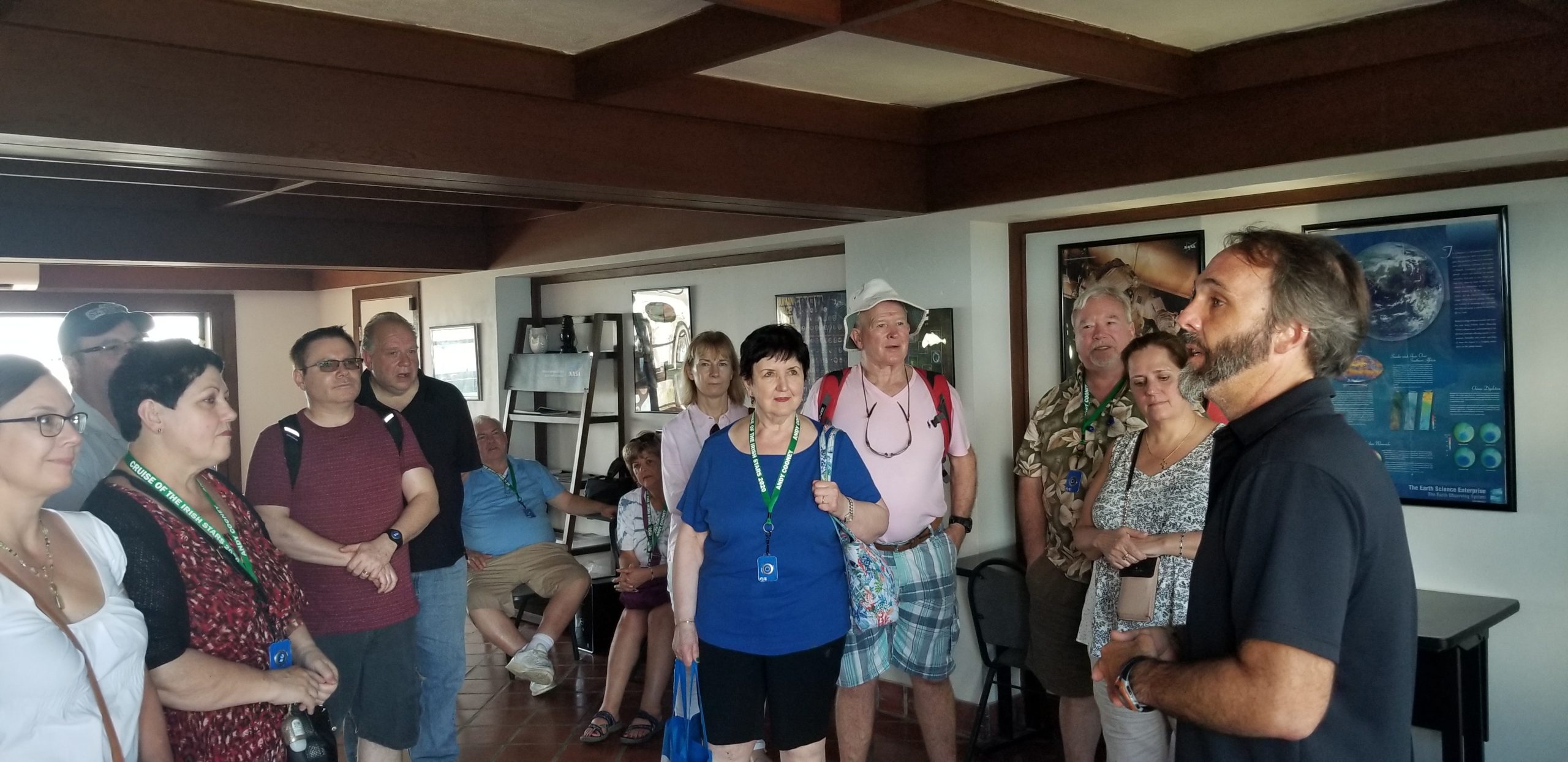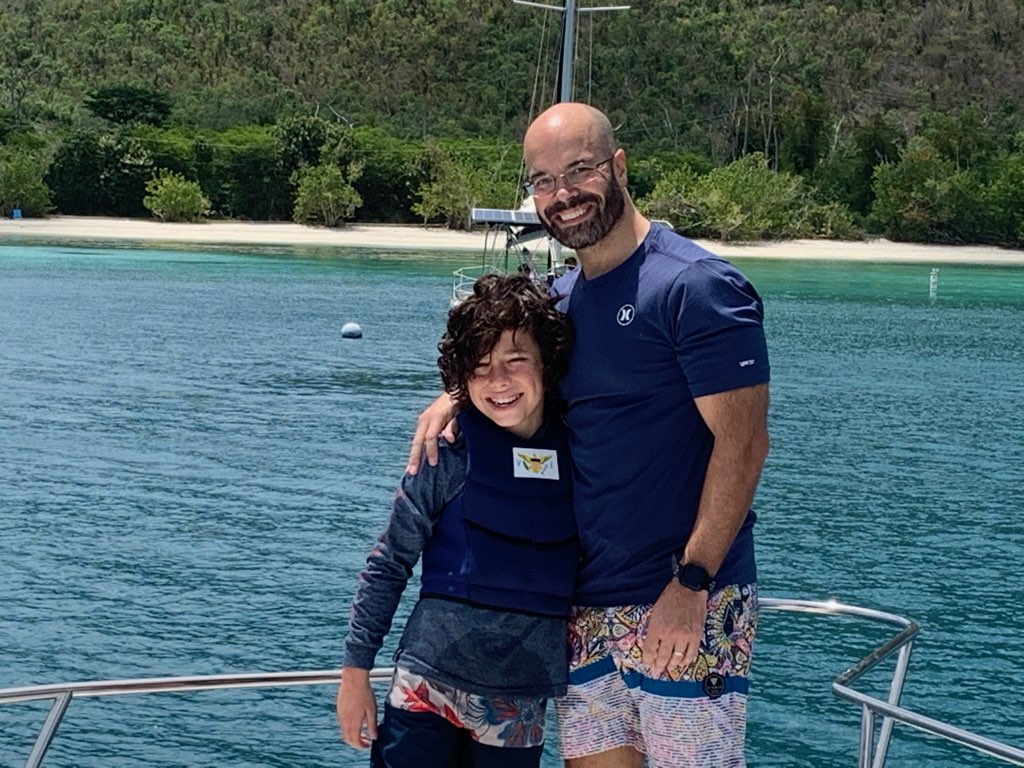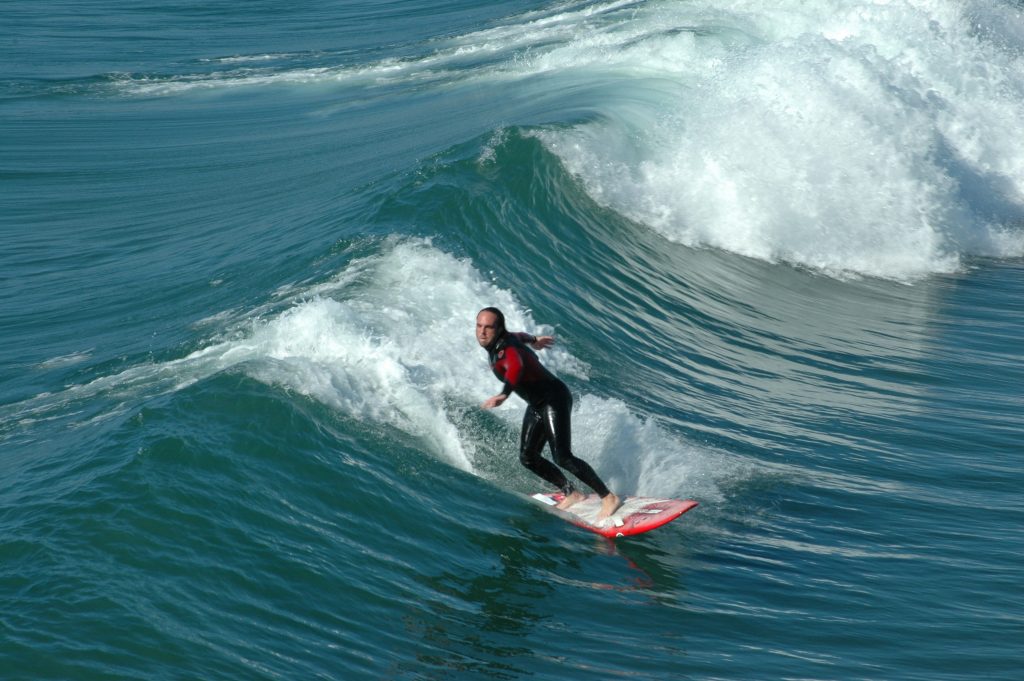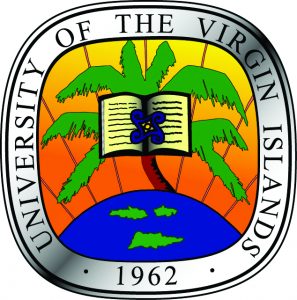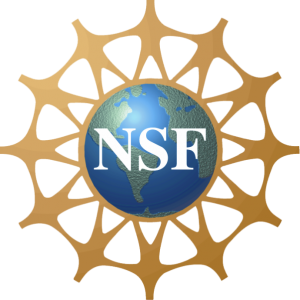Observing the need to foster inclusion and embrace diversity
Dr Brice Orange and Dr David Morris form part of the team based at the Etelman Observatory in the US Virgin Islands, an establishment focused on educating a new generation of students in physics, astronomy and engineering.
So much of scientific understanding is the result of making observations. The invention of the microscope towards the end of the 16th century led to the ability to observe small objects and structures that were invisible to the naked eye. Similarly, the invention of the telescope a few decades later enabled us to view things that were massive, but millions upon millions of miles away from Earth.
Since then, technological developments have led to the creation of near-unimaginably large telescopes which are located at observatories around the world. One of these, the Virgin Islands Robotic Telescope (VIRT), is located at the University of the Virgin Islands’ (UVI) Etelman Observatory in the US Virgin Islands, whose main science goal is rapid follow-up of rare and short-lived transients known as gamma-ray bursts. Gamma-ray bursts (or GRB) are some of the most powerful explosions in the Universe and are the only astrophysical event observed, so far, in both optical light and gravitational waves. VIRT is available to students and researchers who want to conduct hands-on projects related to robotic telescope control systems, observations, data processing and management, and data analysis activities.
Dr Brice Orange, Executive Director of and Astrophysicist at the Etelman Observatory, works alongside the Director, Dr David Morris, who is also Associate Professor of Physics at UVI. For Brice and David, one of the key tenets of the Etelman Observatory is to educate a new generation of students and provide an aspirational place for young people to learn and work.
Etelman is a key astrophysics research centre and engineering training component in UVI’s physics and engineering degree programmes. It is home to the 0.5 metre diameter, visible-light telescope, VIRT, which is the key scientific instrument used in the observatory’s astrophysics research. The observatory also serves as the data and programme management centre for the US Virgin Islands Climate Monitor. This programme focuses on collecting and managing a climate database derived from a network of 17 weather stations distributed throughout the islands of St. Thomas, Water Island and St. John. This programme is also being expanded to include another 19 stations that will provide coverage of the island of St. Croix.
The observatory has a range of research workstations dedicated to solar atmospheric physics, high-energy astrophysics and extreme climate variability studies. The grounds host three experimental rain harvest units and are being rejuvenated to support aspects of sustainable small-scale farming. As a regional physical science research and education centre, Etelman certainly has a lot going on!
EVOLUTION AND GROWTH
A team of dedicated staff, student researchers and volunteers has been an essential part of the observatory’s growth. Everyone shares a common vision of maximising the potential of the research initiatives to inspire the next generation of STEM scientists.
Indeed, the UVI has seen a dramatic increase in enrolment in physics and maths courses in recent years, which serves as testament to their efforts. “The observatory also serves as a teaching facility where we hold astrophysics lab courses. It is a tremendous education and outreach venue. We hold approximately monthly outreach events that draw 100-200 attendees, many from the K-12 system,” explains David. “These activities introduce students to astrophysics and the broader field of physics and allow UVI faculty to interact with K-12 students and their parents and make them aware of opportunities to pursue physics and other STEM careers at UVI.”
DIVERSITY IN PHYSICS AND ENGINEERING
UVI is an HBCU, that is, a Historically Black College/University and its student population is predominantly of demographic groups who have been historically under-represented in STEM fields. The team is proud that among the physics programme’s first five graduates (from the first two graduating classes in 2019 and 2020), two are women and four are African American. These percentages are well above the national averages for diversity in physics Bachelor of Science graduates.
Etelman also works to support young people in their studies and hires young researchers at the start of their career. “We actively work to mentor undergraduate student researchers and encourage them in their pursuit of other internship opportunities, such as with NASA and the US Department of Agriculture,” says Brice. “We also support high school students in various observatory research initiatives to engage and inspire them to pursue a degree and career in STEM.”
LINKS WITH THE WIDER COMMUNITY
In 2019, the observatory joined an international collaboration of telescopes across the globe focused on studying and understanding the elusive explosions in space that lead to the emission of powerful bursts of gravitational waves. The Global Rapid Advanced Network Devoted to Multi-messenger Addicts collaboration is a worldwide partnership of 25 ground-based telescopes in Europe, Asia, Australia, North America and the Caribbean.
The observatory also collaborates with the University of Western Australia’s Zadko Observatory, and with the Robotically Controlled Telescope operated by a consortium of universities including South Carolina State University and the University of Western Kentucky. These collaborations are focused on complimentary observation that provides more complete and continuous coverage of the optical counterpart of gamma-ray bursts and monitors galaxies that previously hosted ultralong gamma-ray bursts.
VISIONS FOR THE FUTURE
Brice envisions an increase of scientific production in the observatory’s key research areas, as well as further diversification of the research activities available to students. “We are working to open up to tourism and astrotourism activities, as well as agrotourism,” says Brice. “We want to pave the way for more scientists, undergraduate researchers, community members and visitors to study and take in the abundant flora that call Etelman’s multiple-tiered gardens home.”
David believes that the success of the facility reflects the ambition and talent of the territory, which shows no signs of stopping. “The observatory has grown in prominence in the research community over the past 10 years due to the increase in commitment of faculty and students at UVI to pursue physics research and physics and astrophysics careers,” explains David. “The physics programme at UVI continues to grow in size and productivity each year. UVI has recently become among the nation’s leading HBCUs in producing physics graduates each year. We look forward to introducing more degree students to the excitement of astrophysics research and the potential for future careers in a wide range of STEM fields. The multidisciplinary nature of the work we do at Etelman provides a great training ground for students to begin their career path toward many different specialty areas. Our physics graduates are pursuing careers in fields including astrochemistry, renewable energy, medicine, aerospace engineering, computational biology and investment banking. The Etelman Observatory has been a launching point for a remarkably diverse group of career paths and we look forward to continuing that in the future.”
Etleman is a learning establishment forging an exciting future – will you be part of it?
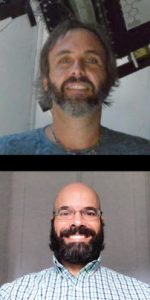 DR BRICE ORANGE
DR BRICE ORANGE
Executive Director of and Astrophysicist at the Etelman Observatory, St. Thomas, United States Virgin Islands and CEO of OrangeWave Innovative Science, South
Carolina, USA
FIELD OF RESEARCH: Solar Physics, Applied Electromagnetics, Instrumentation
DR DAVID MORRIS
Director of the Etelman Observatory and Associate Professor of Physics at the University of the Virgin Islands, St. Thomas, United States Virgin Islands
FIELD OF RESEARCH: Observational Astrophysics, Instrumentation
FUNDER: The Etelman Observatory and its staff gratefully acknowledge support from: NSF EiR Award 1901296, NASA MUREP MIRO award NNX15AP95A, NASA MUREP MIRO award 80NSSC21M0001, NASA EPSCoR award 80NSSC17M0048, NASA EPSCoR award 80NSSC19M0060, NASA South Carolina Space Grant award NNX15AL49H, NAS Gulf Research Program award 2000009514, US Geological Survey to the Virgin Islands Water Resources Research Institute award G16AP00089, FEMA award HMGP
STUDENT PROFILE: RUEL MITCHEL
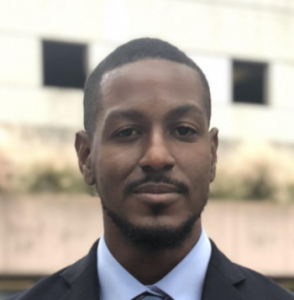
Ruel completed a dual-degree in engineering and applied mathematics at the University of the Virgin Islands and the University of South Florida.
WHAT LED YOU TO THE ETELMAN OBSERVATORY?
While studying at UVI, I had the opportunity to apply to work on solar astrophysics during a summer research experience. I saw it as an opportunity to grow as a young scientist, as well as begin my journey into a scientific discipline.
WHAT RESEARCH DID YOU WORK ON?
While at the observatory, my research focused on analysing the Solar Physics Feature Database catalogue to investigate the nature of solar variability and atmospheric redistribution processes.
WHAT SUPPORT DID YOU RECEIVE?
Reference
https://doi.org/10.33424/FUTURUM149
Since then, technological developments have led to the creation of near-unimaginably large telescopes which are located at observatories around the world. One of these, the Virgin Islands Robotic Telescope (VIRT), is located at the University of the Virgin Islands’ (UVI) Etelman Observatory in the US Virgin Islands, whose main science goal is rapid follow-up of rare and short-lived transients known as gamma-ray bursts. Gamma-ray bursts (or GRB) are some of the most powerful explosions in the Universe and are the only astrophysical event observed, so far, in both optical light and gravitational waves. VIRT is available to students and researchers who want to conduct hands-on projects related to robotic telescope control systems, observations, data processing and management, and data analysis activities.
Dr Brice Orange, Executive Director of and Astrophysicist at the Etelman Observatory, works alongside the Director, Dr David Morris, who is also Associate Professor of Physics at UVI. For Brice and David, one of the key tenets of the Etelman Observatory is to educate a new generation of students and provide an aspirational place for young people to learn and work.
Etelman is a key astrophysics research centre and engineering training component in UVI’s physics and engineering degree programmes. It is home to the 0.5 metre diameter, visible-light telescope, VIRT, which is the key scientific instrument used in the observatory’s astrophysics research. The observatory also serves as the data and programme management centre for the US Virgin Islands Climate Monitor. This programme focuses on collecting and managing a climate database derived from a network of 17 weather stations distributed throughout the islands of St. Thomas, Water Island and St. John. This programme is also being expanded to include another 19 stations that will provide coverage of the island of St. Croix.
The observatory has a range of research workstations dedicated to solar atmospheric physics, high-energy astrophysics and extreme climate variability studies. The grounds host three experimental rain harvest units and are being rejuvenated to support aspects of sustainable small-scale farming. As a regional physical science research and education centre, Etelman certainly has a lot going on!
EVOLUTION AND GROWTH
A team of dedicated staff, student researchers and volunteers has been an essential part of the observatory’s growth. Everyone shares a common vision of maximising the potential of the research initiatives to inspire the next generation of STEM scientists.
Indeed, the UVI has seen a dramatic increase in enrolment in physics and maths courses in recent years, which serves as testament to their efforts. “The observatory also serves as a teaching facility where we hold astrophysics lab courses. It is a tremendous education and outreach venue. We hold approximately monthly outreach events that draw 100-200 attendees, many from the K-12 system,” explains David. “These activities introduce students to astrophysics and the broader field of physics and allow UVI faculty to interact with K-12 students and their parents and make them aware of opportunities to pursue physics and other STEM careers at UVI.”
DIVERSITY IN PHYSICS AND ENGINEERING
UVI is an HBCU, that is, a Historically Black College/University and its student population is predominantly of demographic groups who have been historically under-represented in STEM fields. The team is proud that among the physics programme’s first five graduates (from the first two graduating classes in 2019 and 2020), two are women and four are African American. These percentages are well above the national averages for diversity in physics Bachelor of Science graduates.
Etelman also works to support young people in their studies and hires young researchers at the start of their career. “We actively work to mentor undergraduate student researchers and encourage them in their pursuit of other internship opportunities, such as with NASA and the US Department of Agriculture,” says Brice. “We also support high school students in various observatory research initiatives to engage and inspire them to pursue a degree and career in STEM.”
LINKS WITH THE WIDER COMMUNITY
In 2019, the observatory joined an international collaboration of telescopes across the globe focused on studying and understanding the elusive explosions in space that lead to the emission of powerful bursts of gravitational waves. The Global Rapid Advanced Network Devoted to Multi-messenger Addicts collaboration is a worldwide partnership of 25 ground-based telescopes in Europe, Asia, Australia, North America and the Caribbean.
The observatory also collaborates with the University of Western Australia’s Zadko Observatory, and with the Robotically Controlled Telescope operated by a consortium of universities including South Carolina State University and the University of Western Kentucky. These collaborations are focused on complimentary observation that provides more complete and continuous coverage of the optical counterpart of gamma-ray bursts and monitors galaxies that previously hosted ultralong gamma-ray bursts.
VISIONS FOR THE FUTURE
Brice envisions an increase of scientific production in the observatory’s key research areas, as well as further diversification of the research activities available to students. “We are working to open up to tourism and astrotourism activities, as well as agrotourism,” says Brice. “We want to pave the way for more scientists, undergraduate researchers, community members and visitors to study and take in the abundant flora that call Etelman’s multiple-tiered gardens home.”
David believes that the success of the facility reflects the ambition and talent of the territory, which shows no signs of stopping. “The observatory has grown in prominence in the research community over the past 10 years due to the increase in commitment of faculty and students at UVI to pursue physics research and physics and astrophysics careers,” explains David. “The physics programme at UVI continues to grow in size and productivity each year. UVI has recently become among the nation’s leading HBCUs in producing physics graduates each year. We look forward to introducing more degree students to the excitement of astrophysics research and the potential for future careers in a wide range of STEM fields. The multidisciplinary nature of the work we do at Etelman provides a great training ground for students to begin their career path toward many different specialty areas. Our physics graduates are pursuing careers in fields including astrochemistry, renewable energy, medicine, aerospace engineering, computational biology and investment banking. The Etelman Observatory has been a launching point for a remarkably diverse group of career paths and we look forward to continuing that in the future.”
Etleman is a learning establishment forging an exciting future – will you be part of it?
 DR BRICE ORANGE
DR BRICE ORANGE
Executive Director of and Astrophysicist at the Etelman Observatory, St. Thomas, United States Virgin Islands and CEO of OrangeWave Innovative Science, South
Carolina, USA
FIELD OF RESEARCH: Solar Physics, Applied Electromagnetics, Instrumentation
DR DAVID MORRIS
Director of the Etelman Observatory and Associate Professor of Physics at the University of the Virgin Islands, St. Thomas, United States Virgin Islands
FIELD OF RESEARCH: Observational Astrophysics, Instrumentation
FUNDER: The Etelman Observatory and its staff gratefully acknowledge support from: NSF EiR Award 1901296, NASA MUREP MIRO award NNX15AP95A, NASA MUREP MIRO award 80NSSC21M0001, NASA EPSCoR award 80NSSC17M0048, NASA EPSCoR award 80NSSC19M0060, NASA South Carolina Space Grant award NNX15AL49H, NAS Gulf Research Program award 2000009514, US Geological Survey to the Virgin Islands Water Resources Research Institute award G16AP00089, FEMA award HMGP

Ruel completed a dual-degree in engineering and applied mathematics at the University of the Virgin Islands and the University of South Florida.
WHAT LED YOU TO THE ETELMAN OBSERVATORY?
While studying at UVI, I had the opportunity to apply to work on solar astrophysics during a summer research experience. I saw it as an opportunity to grow as a young scientist, as well as begin my journey into a scientific discipline.
WHAT RESEARCH DID YOU WORK ON?
While at the observatory, my research focused on analysing the Solar Physics Feature Database catalogue to investigate the nature of solar variability and atmospheric redistribution processes.
WHAT SUPPORT DID YOU RECEIVE?
I was mentored by Dr Brice Orange, who provided guidance, emotional support and motivation, as I grew confident in exploring my career paths, future goals, building leadership skills and understanding corporate cultures.
WHAT MAKES ETELMAN SUCH A SPECIAL PLACE?
Etelman is the only observatory in the Virgin Islands and it houses the only research grade automated Cassegrain telescope I’m aware of in the Lesser Antilles. The observatory staff are very enthusiastic and have a great group of volunteers. It is also led by vetted astronomers and has university faculty who aid one another in research and career growth.
WHAT DID YOU GAIN FROM YOUR TIME AT THE OBSERVATORY?
I truly grew as a young scientist and engineer; I’m confident in myself and my skills as a result. When I left my home university in the Virgin Islands to study engineering, I had an advantage over many of my peers in terms of technical experience and critical thinking skills. During the tough moments in my education, experience I acquired from the mentoring at Etelman helped me stay focused and avoid emotional and mental pitfalls.
WHAT AMBITIONS HAVE YOU SET YOURSELF FOR THE FUTURE?
I am trying my best to become a great engineer/scientist, with great experience in multiple technical and non-technical disciplines. Hopefully, in the future, I can pass down everything and mentor a protegee myself.
EXPLORE A CAREER IN ASTROPHYSICS
• Study in the USA has a section dedicated to studying astrophysics and astronomy which includes a map you can click on to find a school in the area you are interested in studying at
• Science for the Public has put together an exhaustive list of resources relating to astronomy and astrophysics:
• According to National Careers Service, salaries can range anywhere between £15,000 and £60,000, depending on experience.
Brice and David are keen to emphasise the importance of mathematics in becoming an astrophysicist. “First learn maths. Then learn more maths. Then, once you know maths well, start taking physics courses,” says David. “Once you have learned the basics of physics, you can begin learning astronomy, which is where the fun begins!”
You will need a degree in a relevant subject for postgraduate study.
HOW DID BRICE BECOME AN ASTROPHYSICIST?
I have been inspired by my father, and one of his favourite quotes: “knowledge is power”. He always encouraged, supported and pushed me to think beyond the limits of any box.
My success boils down to a relentless pursuit of my own metric – the measure of success rivals the vastness of your own mentality. In addition, my unwavering dedication to simultaneously pursue what I routinely heard was the supposedly unobtainable and my own happiness.
I had a moment I would call ‘eureka’, and others I fondly think of as happenstance. The eureka happened after graduating undergrad, while I was working as a surf instructor. I realised that my passion and career, whatever they ended up metamorphosing into, would require much more involvement from my brain. So, I made the decision that it might be worth trying my hand at graduate school.
In addition to my main passion, the Sun-Earth system, my company, OrangeWave has allowed me to dabble in many science and Research & Development (R&D) things, which I love. So, here goes! I have been involved in solar atmospheric and plasma physics, robotic telescope control systems and system operations of robotic observatories, environmental/climate science and related technology R&D, high-energy astrophysics, software engineering that supports diverse scientific research fields, vertical flight R&D, development of radiation shielding technology, and R&D for an experimental plasma physics/magnetic reconnection system to mimic solar flares.
I am an (extremely) small town/rural area kid, who loves all things to do with the ocean – particularly surfing – and spending time with family and friends, gardening, travelling, trying out new food, and trying (with an emphasis on trying!) to learn Norwegian from my Norwegian wife.
HOW DID DAVID BECOME AN ASTROPHYSICIST?
I have always been fascinated with the fundamental questions of where the Universe came from, if there is life elsewhere and how life began. These questions can only be approached through science, especially physics and astronomy.
Physics and astronomy are fields that allow you to dive deeply into understanding the world and the Universe around you through maths and data. If you do it right, you see connections on all scales in the world around you, but it often takes tremendous patience and dedication to understand and demonstrate principles through observations that may sometimes take many years to accumulate. Sharing the sense of satisfaction that I derive from understanding and appreciating these connections with students is one of my greatest satisfactions. It is gratifying to hear students express this same sense of wonderment.
Many years ago, I studied astrophysics as an undergraduate at the University of Massachusetts. As an undergraduate I did research at a small observatory, similar to Etelman. I trace my passion for the work I do now back to those days. After several years in aerospace contracting (after my Bachelor of Science in physics and astronomy), I returned to graduate school where I studied astrophysics using satellite observatories and, after graduate school, I worked at NASA’s Goddard Space Flight Center. Later, a relative happened to see an advertisement for a faculty position at the University of the
Virgin Islands and to also take on directorship of a small observatory, not unlike the one I did research at as an undergraduate! It seemed like a tremendous opportunity to build a program that would allow me to do the science that I was passionate about while also giving UVI’s students access to the same kind of hands-on science projects that I had as an undergraduate. It was a chance I couldn’t pass up!
Dedication, patience, and commitment to learning always have helped me throughout my career. I believe a scientist is a person who sees every day as a chance to study things around them and to learn – to look for connections that make seemingly different phenomena easier to understand in the aggregate.
BRICE AND DAVID’S TOP TIPS
01 Science is everywhere, and everything, you just have to know how to listen and find what parts of it set your heart and brain on fire.
02 Never forget where you come from. Combine that with high levels of passion and dedication and you will be on the path to success.
03 Do your best to listen to what you are being told and exhibit critical thinking and reasoning skills.
04 Commit to every step of your journey, whether you know where it will lead or not. Try and enjoy it!
Write it in the comments box below and Brice, David or Ruel will get back to you. (Remember, researchers are very busy people, so you may have to wait a few days.)

